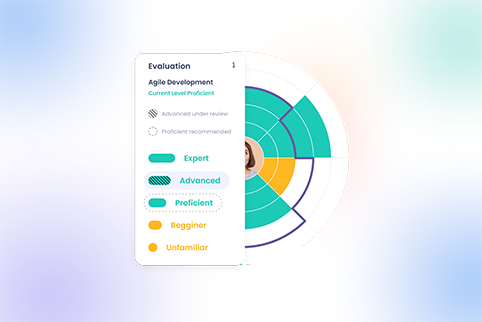
Whether it’s due to talent and skill shortages, tech disruptions, or changes in workforce dynamics, organizations, and HR managers could soon find themselves in a situation where redeployment won’t be something that affects only a limited number of industries.
To make the most out of employees and ensure continuity in business and performance levels, it’s important to turn our attention to redeployment scenarios and policies that will enable decision-makers to respond strategically and effectively in the face of potential redundancy.
Ready to explore the ins and outs of redeployment? Let’s dive right in!
What is redeployment?
Moving an employee from one role or project to another is what we refer to as talent redeployment, workforce redeployment, or simply redeployment. The main goal of this process is usually to avoid redundancy or fill job vacancies by finding mutually beneficial ways to keep skilled workers within the organization.
People are typically redeployed to a different role through lateral moves, but sometimes it can also be to another location or branch, within a reasonable commute distance.
Why and when is redeployment necessary?
Some of the factors driving redeployment needs and pushing companies to find alternative arrangements include:
- Talent and skill shortages: According to ManpowerGroup, 77% of companies globally report talent shortages in 2023 – the highest in 17 years. And while gaps in desirable abilities and expertise vary from one industry to another, soft skills and digital literacy are areas that usually stand out.
- Periods of slow economic growth: The current inflation and slowdown in consumer or market demand are a good example, with online streaming services being among the ones taking a hit.
- Business downscaling or restructuring: Tech giants, who benefitted from people spending more time at home during the pandemic and expanded their services, are now being faced with the need to reduce costs and optimize talent allocation.
- Business mergers or acquisitions: In the aftermath of these deals, some employees often find themselves at risk of redundancy. For example, while Google acquired Waze way back in 2013, its recent decision to merge that team with people at Google Maps inevitably led to discussions on layoffs or redeployment.
- Disruptions: Whether it’s innovations like automation and machine learning or simply an unexpected change in market trends, skills can become obsolete relatively quickly, and that’s another situation where redeployment needs to be considered.
- Overstaffing: Overestimating long-term workforce needs or focusing too much on short-term goals will see HR departments faced with this situation, which is why strategic workforce planning is so important.
- Medical reasons: Although a less common reason for redeployment, disability, or other affections preventing a current employee from performing their previous duties could determine the employer to look for alternative solutions, like part-time arrangements or a reduction in responsibilities, which would still allow an employee in that situation to continue working.
What are the benefits of redeployment?
When planned and implemented well, redeployment opportunities can be advantageous to employees and employers alike:
Keep people relevant
Just because a specific role or department is no longer needed, it doesn’t mean that the skills and expertise of people working there cannot be repurposed.
It’s true that this largely depends on the redeployment opportunities available within each company — you cannot offer people jobs you do not have. But looking at all possible alternatives before considering redundancy is a good starting point.
Avoid the risks of cultural misfit scenarios
Another benefit is the fact that moving existing employees, who are already familiar with the work environment and organizational culture, almost completely eliminates the ‘cultural-misfit’ type of situation. This improves their chances of successfully adapting to the new roles by focusing on the actual tasks and job requirements.
Boost employee morale and loyalty
By displaying a commitment toward their people through actions, companies, and HR departments will prove that the culture and human-centric approach of the organization is valued by everyone, including top leadership and key decision-makers.
In addition to improving morale and helping people feel safer and supported, it will also create and strengthen a strong brand image, helping retain and attract top talent in the long run.
Optimize costs
If successful, talent redeployment plans will also reduce the expenses associated with recruiting, hiring, and onboarding. These resources can instead be invested in retraining existing talent and helping them adapt to other roles so that they remain valuable contributors to the goals of the organization.
How to successfully redeploy employees
Redeployment doesn’t come without challenges, but following the steps outlined below will help you navigate this process with more confidence:
Identify redeployment needs early on
Identifying employees whose jobs are at risk isn’t always a straightforward process. But there are important steps that any HR department can take, as part of their talent management process, to predict redeployment needs:
- Monitor industry and workforce-related trends to better understand the types of skills or resources that will remain in high demand.
- Explore the potential impact of emerging tools, like automation and AI, and seek to understand how they can impact each department. Then, start discussions with people in charge of teams who are at a higher risk and seek solutions together.
- Experiment with scenario planning, and create potential responses or backup plans for unpredictable situations that could directly impact your workforce.
Create talent pools using insights on the skills of potential redeployees
Once the need to reassign employees becomes obvious, it’s time to conduct an initial analysis, during which HR and people managers need to establish how well each employee matches with one of the roles available as part of redeployment opportunities.
One question that may arise here is: who within the current workforce is qualified now or can we easily train to move to another department? Embracing a skills-based approach, during this stage of the process, will lead to accurate data and will increase the likelihood of identifying suitable candidates and ensuring smooth and successful transitions to the new roles.
This initial analysis of skills will also show a matching compatibility between an employee and the future job role (for example 3 out of 7 skills required) and also reveal any gaps making room to identifying the most important steps and talent development initiatives that will be the most relevant to close the skills gaps.
Select and prioritize targeted upskilling and reskilling programs
After defining your skills-based talent pools, it’s time to choose the training and development opportunities (reskilling, upskilling) that meet the needs of future redeployees.
Factors like common skills required in the new job role and the previous one, the complexity of the tasks, and the existing skill set of a particular employee will largely determine how much retraining they require and how long it will take to adapt to the new position. For example, moving a marketing specialist into a sales support role might require identifying the necessary skills for the new role, possible gaps and career paths and growth initiatives that would make this redeployment process possible.
Depending on the urgency of the redeployment need, this retraining process could also be part of the initial adaption or trial period, thus merging with the process known as learning in the flow of work or learning as you do.
Leverage non-linear career paths in your redeployment plans
Organizations that embrace non-linear career paths as part of their talent development and (re) allocation allow and encourage employees to develop in more dynamic ways, which better align their aspirations with business goals that change over time.
If your company culture values learning and nurtures growth through all types of moves — lateral, cross-departmental, vertical — when faced with the risk of redundancy or critical vacancies, your employees will be more likely to respond positively and adapt quickly and with higher success rates to their new roles, since continuous learning will be like second nature to them.
Deploy and support people throughout the adaptation period in their new roles
The first 180 days following redeployment are crucial. It is often during this period when your employees will realize whether they can adapt to the new positions or whether they need additional support and resources (tools, learning materials, or even time). The assistance received from both colleagues and managers is invaluable but it’s also important to accept that sometimes things just won’t work out.
The monitoring phase should continue up until the 6-month mark, and then it can carry on in the form of regular catch-ups and performance reviews to further assess the settlement (and performance) of each worker into their new environment.
Best practices for a smooth redeployment process
Here are some of the tips, tricks, and approaches HR and people managers can implement to streamline their redeployment practices and avoid potential pitfalls:
Embrace transparency and open communication
Keeping people in the dark is never a good idea, and it’s always better for them to hear official information from you instead of allowing rumors to spread or giving people time to make rushed decisions.
Communicating openly about the need for redeployment will highlight that you’re serious about ensuring a fair transition process and that the well-being of your workforce is one of the top priorities.
While it doesn’t need to be included in the initial discussions, clearly outlining the performance expectations from future redeployees should also happen during this initial stage.
Find ways to maintain the morale and engagement of redeployees
Whether it’s due to potential redundancy or the need to fill vacant roles, how you communicate the redeployment initiatives is just as important as how you implement the process itself. While being informed that support and L&D opportunities will be available, these won’t necessarily alleviate all the concerns or insecurities of potential redeployees.
It is critical that key leaders in your organization, ideally managers or people who have worked with the employees at risk, explain why this redeployment is needed, why this group of workers has been selected instead of another, and so on. These leaders also have the role of providing reassurance over the assistance that will be given and explaining every action taken in that direction.
If there are examples of previous transitions, be it as part of redeployment or simply internal career changes, you can highlight them to boost morale and inspire the belief in people that they can achieve success even in a different role.
Define redeployment and redundancy policies
Having a redeployment or redundancy policy makes things a lot easier, since it:
- Clarifies the terms, conditions, and rights of all parties involved.
- Lays out the redeployment steps for team leads, managers, and department heads.
- Presents the conditions under which employees could choose to decline the redeployment offer and explore alternative arrangements.
Example of redeployment
A relatively recent example of redeployment being embraced as a powerful talent management and business solution comes from Amazon.
The tech giant decided that moving some employees from less profitable teams — like those working on its voice assistant, Alexa — makes more business sense, resulting in cost reductions and improving the capabilities of other departments. In their particular case, redeployment took a couple of different forms:
- On one hand, they informed some employees in advance to start looking for roles in other areas or business units within the company.
- On the other, some workers were directly redeployed or moved to teams or departments that were already meeting ROI expectations.
In Amazon’s case, several factors contributed to this strategic move: a slowdown in economic and business growth (market trends), the fact that its customers mainly use Alexa only for a few functions (consumer demands), and choosing to double down on the units and products that were in higher demand and brought a more significant ROI (business growth and sustainability).
Final thoughts
In the current world of work, and with a future defined by relentless advancements in tech, many organizations and employees could find themselves in situations where redeployment might be the only (or the best) option.
To adapt the old saying, “It’s better to be a warrior in a garden than to be a gardener in a war.”, it’s better to have a solid redeployment strategy and policy in a world without redundancy than to dismiss or overlook redeployment in a world where we’ll need to reskill more than 1 billion people by 2030.







